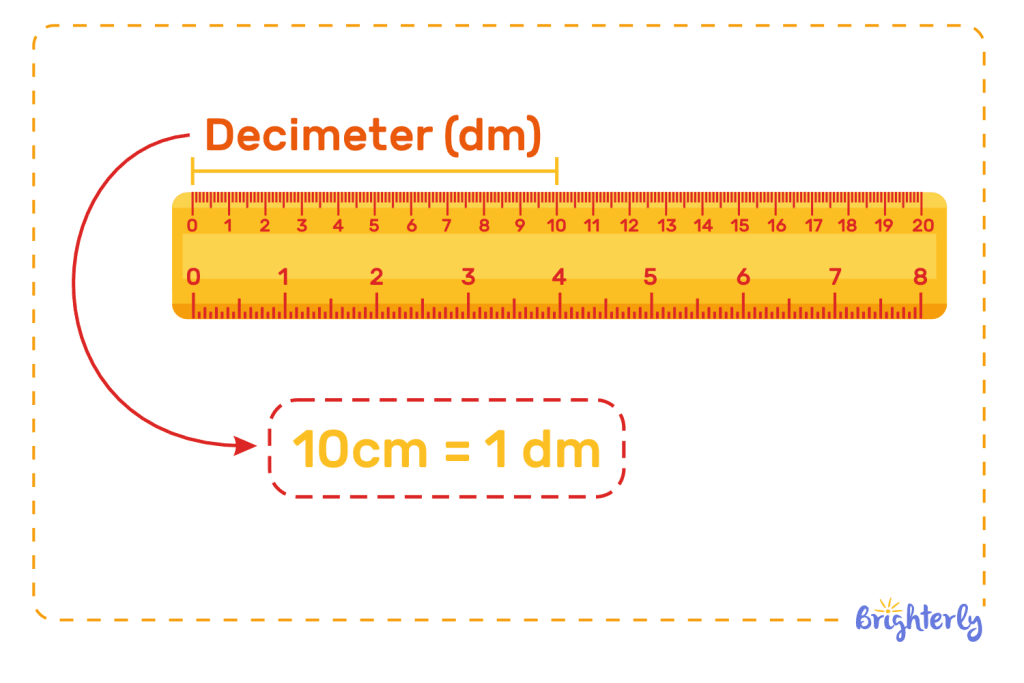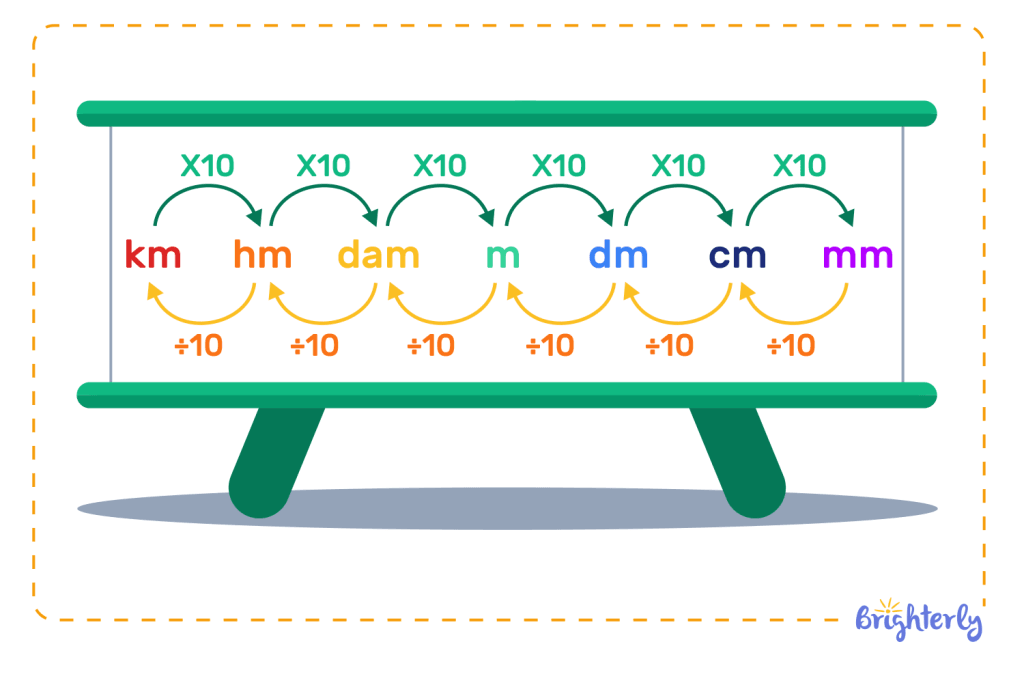Decimeter – Units, Definition, Solved Examples, Facts
reviewed by Jo-ann Caballes
Updated on October 30, 2025
Are you learning about measurements in your math class at the moment? You’re in the right place to improve your knowledge with Brighterly’s help!
Today, we’re going to cover the decimeter. This unit of length isn’t as well-known as some of its other metric system measurements, but still, it’s very important! Here, you’ll get to know the decimeter definition, its place in the real world, and conversions to other measurements.
What is a decimeter?
So, what is decimeter? A decimeter is a metric unit of length measurement, and the decimeter abbreviation is dm. It is one-tenth of a meter, and 10x bigger than a centimeter. Like other measurements in the metric system, it’s based on the base 10 system, making conversion within the metric system easy.

What is dm in measurement?
A dm in measurement is a unit of length that sits between a centimeter and a meter.
The importance of the decimeter
While the decimeter might not be as commonly used as measurements like centimeter and meter, it’s still an important part of the metric system. It’s especially useful when measurements are larger than a centimeter but smaller than a meter, like a TV or desk length.
Activities for learning the decimeter
Want to get more familiar with the decimeter? Here are some activities you can do to learn this unit of measurement:
- Take a look around your home or classroom and measure out items in decimeters
- Draw shapes or images using only lines that are a decimeter long
- Practice converting measurements in millimeters, centimeters, or meters to decimeters
Comparing the decimeter to other units of measure
If you’re not familiar with the decimeter, comparing it to other units of measure in the metric system can be helpful. So that’s exactly what we’ll do!
How much is a decimeter compared to other measurement units?
So, how big is a decimeter in relation to other units of measurement?
- Millimeter: 1 decimeter is 100x times bigger than a millimeter
- Centimeter: 1 decimeter is 10x bigger than a centimeter
- Meter: 1 decimeter is 0.1 times the length of the meter
- Kilometer: 1 decimeter is 0.0001 the length of a kilometer

This answers the question, “How long is a decimeter?”
How many decimeters are in a meter?
There are 10 decimeters in a meter. The decimeter sits between the centimeter and meter in the base-10 system, making it one-tenth of a meter.
Decimeter in the real world
Although objects aren’t commonly measured in decimeters, you’ll find plenty of samples around you that can be conveniently measured with this unit! They include:
- Plants and flowers growing in your garden
- Cups and glasses
- Pens and pencils
- Sofas and other furniture
- Books and magazines
Decimeter in practice: Solved examples
Now, here are some solved math problems to help you understand how to tackle problems related to the decimeter.
Solved math task 1
You have a book that measures 20cm wide. How wide is this in decimeters?
Answer
| 2dm. |
There are 10 centimeters in a decimeter, so to get your answer, divide your measurement in centimeters by 10.
20cm ÷ 10 = 10dm.
Solved math task 2
You have a plant in your garden that measures 3dm tall. How tall is this in centimeters?
Answer
| 30cm. |
The decimeter is 10x bigger than the centimeter, so to get your answer in meters, multiply your measurement in decimeters by 10.
3dm x 10 = 30cm.
Fun facts about the decimeter
Here are some interesting facts about the decimeter:
- The prefix deci in decimeter comes from the Latin word decimus, which means tenth – how fitting!
- The decimeter and the wider metric system are used by most of the world – the US is one of the only countries using the imperial system.
Conclusion
Here, we’ve covered what is the meaning of decimeter, its length, and comparison to other units of measurement. Now you know everything there is to know about the dm unit! While it might not be used as often as its metric system counterparts, it’s still an important measurement that can be applied in many ways.
Frequently asked questions on decimeter
What is a decimeter?
A decimeter is a unit of metric length measurement. It is 10 times larger than a centimeter and one-tenth of a meter.
Where is the decimeter used?
The dm measurement isn’t used as often as the meter or centimeter, but it can be used in scenarios where those two measurements are too large or too small. This could be when measuring a book, a plant, or another item smaller than a meter.
How does a decimeter compare to other units?
A decimeter compares to other units in its size. It’s made up of 10 centimeters and 100 millimeters, making it a larger measurement than them. However, it takes 10 decimeters to make up a meter, and 10,000 to make up a kilometer!
What is the importance of the decimeter in the metric system?
The decimeter is important in the metric system because it bridges the gap between the centimeter and the meter. Using the decimeter, we can more accurately measure items that sit between these two units of measurement.
How old is the concept of a decimeter?
The concept of the decimeter came about around 1795, when France formally created and adopted the metric system. This means that the concept of the decimeter is over 200 years old!






